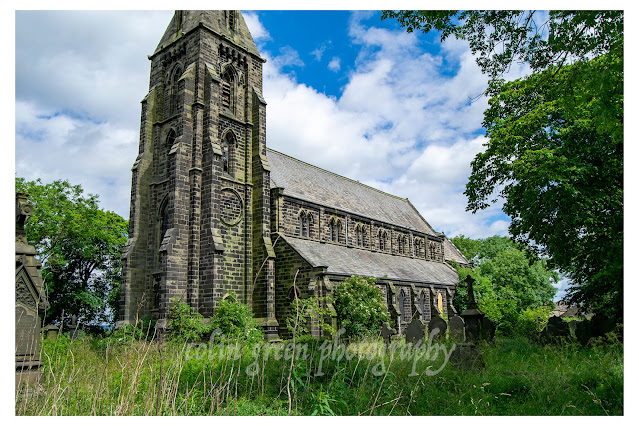The Calder Valley, a ribbon of green winding through the heart of West Yorkshire, holds its secrets close. Amongst its picturesque towns and alongside the tranquil flow of the Rochdale Canal, I'd often glimpsed a solitary silhouette perched high above Todmorden. This was Cross Stone Church, also known as St Paul's, a place that had long piqued my curiosity. Little did I know, the story held within its weathered stones was far more captivating than its distant view suggested.
Finally, on a crisp April day in 2017, armed with my trusty Nikon D3300, I made the climb. What I found wasn't a bustling place of worship, but a silent sentinel, a defunct church with a history etched into its very fabric. Built in 1832, St Paul's wasn't the first sacred space to grace this commanding spot. For centuries before, since at least 1450, earlier churches had stood watch over the valley, their stories now layered beneath the current structure like geological strata.
The year 1978 marked a poignant turning point. Declared unsafe, the church was abandoned, the ominous whisper of it "sliding down the hill" sealing its fate as a place of active worship. This sense of precariousness only added to the air of mystery that clung to the site.
But the history of Cross Stone Church extends beyond its structural woes. Imagine a time when Todmorden was a town divided, straddling the ancient border between Yorkshire and Lancashire. Perched on its hilltop, St Paul's served the spiritual needs of the Yorkshire community, while St Mary's catered to their Lancashire neighbours. The boundary changes of 1888 unified the town under the White Rose of Yorkshire, yet the legacy of this division lingers in the stories of these two churches.
As I wandered the grounds, the silence was broken only by the rustling of leaves and the distant murmur of the valley below. It was then that I noticed the curious details that hinted at the church's long and varied past. And then there were the lower walls, where a certain "spooky setting" did indeed prevail, the weathered stone hinting at tales untold.
Perhaps the most intriguing discovery was tucked away on the east wall: a set of ancient stocks, now embraced by the untamed beauty of a wild garden. These silent restraints spoke of a time when public punishment was a visible part of community life, a stark reminder of the social structures of centuries past. To see them now, softened by moss and surrounded by wildflowers, was a powerful juxtaposition of harsh history and gentle nature.
My long-awaited visit to Cross Stone Church wasn't the vibrant exploration of a living parish I had perhaps naively envisioned. Instead, it was a journey into the quiet dignity of a forgotten place, a poignant encounter with history etched in stone and whispered on the wind. It served as a powerful reminder that even in abandonment, places hold their stories, waiting for a curious eye and an open heart to listen. The view from the hilltop, overlooking Todmorden and the valley beyond, was breath taking, but the true beauty lay in the silent testament of Cross Stone Church, a steadfast landmark bearing witness to centuries of change.

%20Church,%20Todmorden%20a%2012%20x%208.jpg)
%20Church,%20Todmorden%20b%2012%20x%208.jpg)
%20Church,%20Todmorden%20c%2012%20x%208.jpg)
%20Church,%20Todmorden%20d%2012%20x%208%20copy.jpg)
%20Church,%20Todmorden%20e%2012%20x%208.jpg)
%20Church,%20Todmorden%20f%2012%20x%208.jpg)
%20Church,%20Todmorden%20f%2012%20x%208.jpg)























